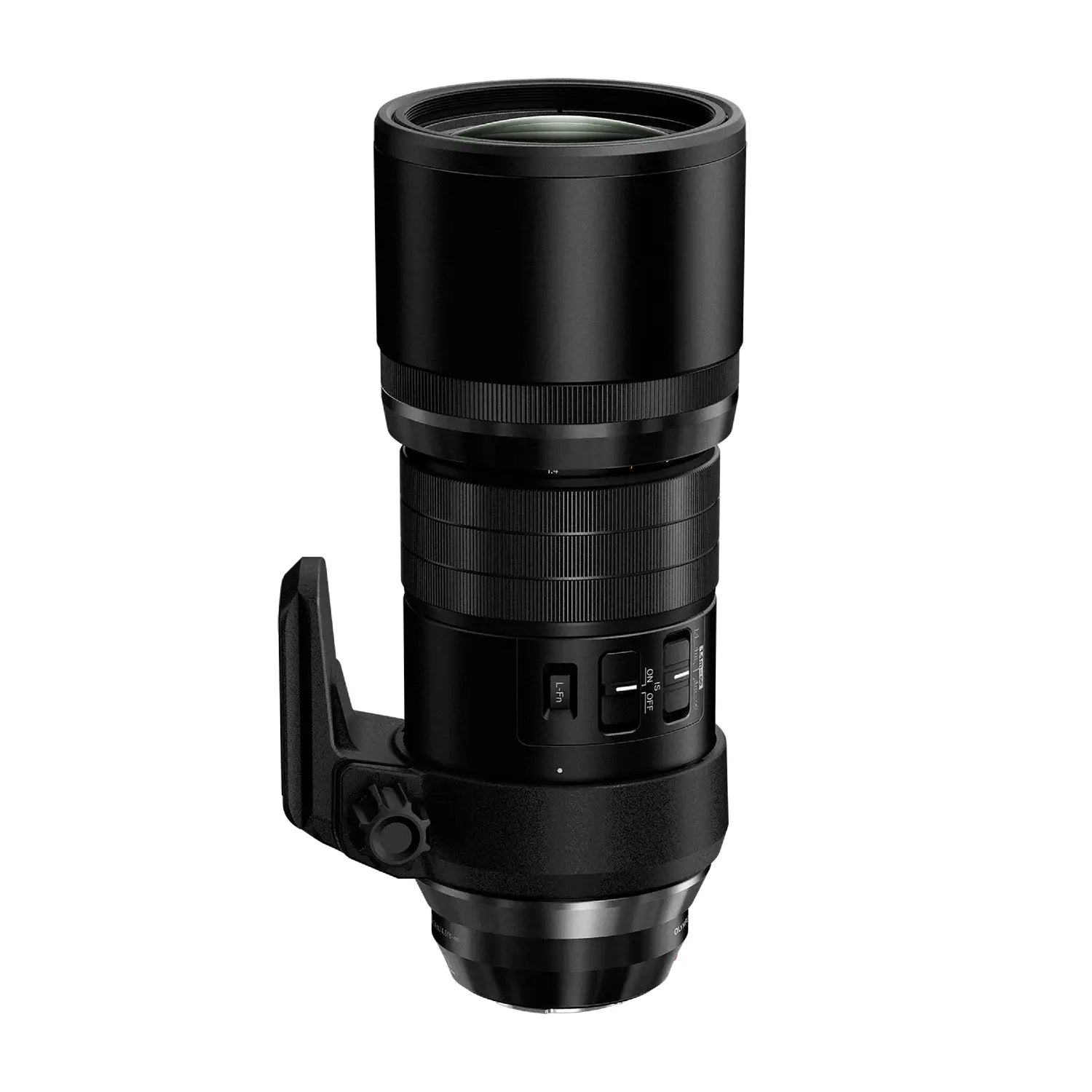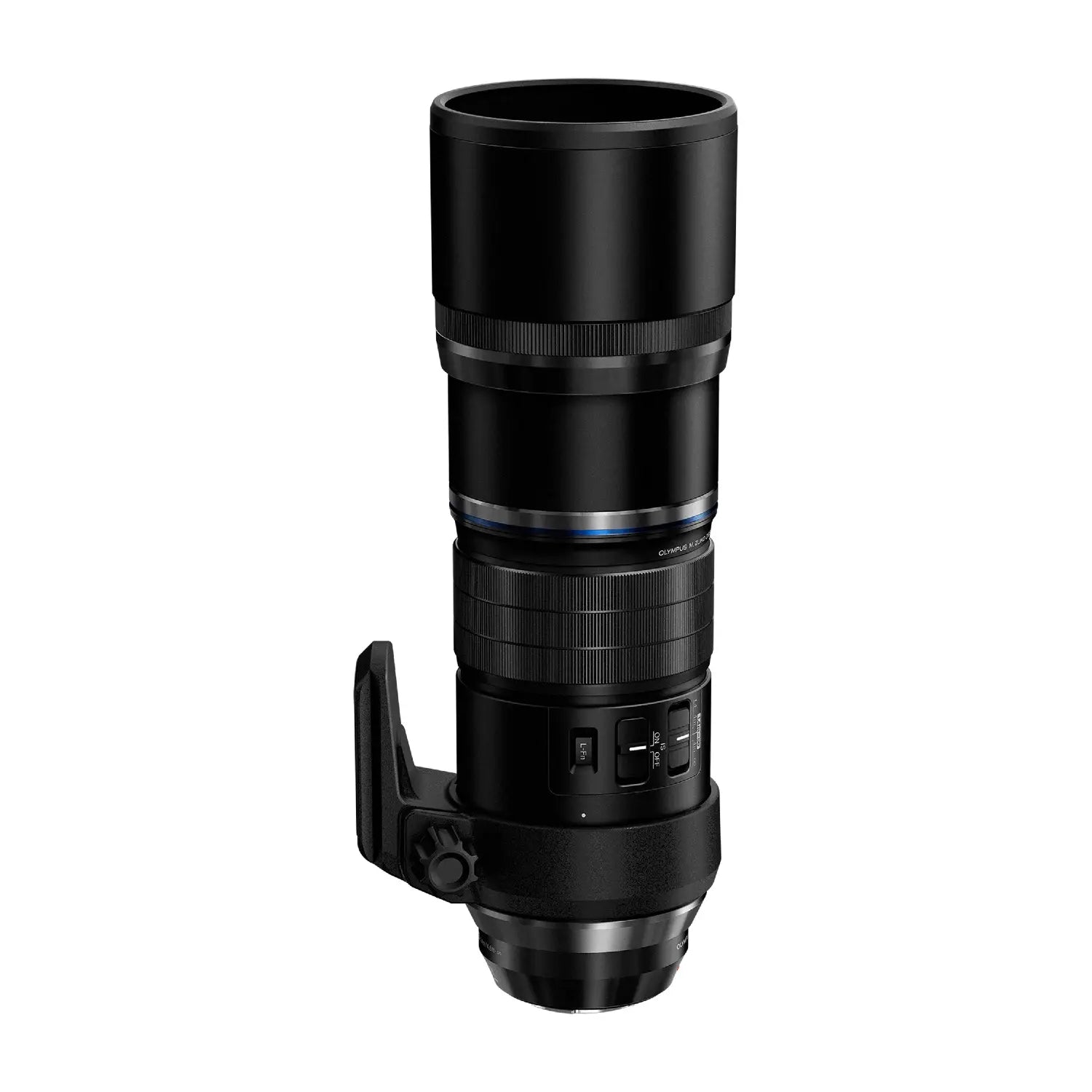Product Description
OM System / Olympus M.Zuiko Digital ED 300mm f/4.0 IS PRO Lens
Professional Super-Telephoto Lens for Wildlife, Sports, and Travel Photography
The OM System / Olympus M.Zuiko Digital ED 300mm f/4.0 IS PRO is a high-performance super-telephoto prime lens designed for professional photographers and serious enthusiasts. With a 600mm full-frame equivalent focal length, this lens delivers exceptional sharpness, fast autofocus, and advanced image stabilisation, making it ideal for wildlife, sports, nature, and travel photography.


Built to professional standards, it features a lightweight yet durable construction, weather sealing, and cutting-edge optical technology, ensuring outstanding performance in any environment.
Key Features
- 600mm Full-Frame Equivalent Focal Length for extreme telephoto reach.
- Sync IS with 5-Axis Image Stabilisation provides up to 6 EV stops of stabilisation when paired with compatible OM-D cameras, significantly reducing camera shake.
- Lightweight and Compact at 1270g, up to 75% lighter than comparable DSLR lenses.
- Exceptional Optical Quality, delivering sharp, high-contrast images with edge-to-edge clarity.
- Fast and Accurate Autofocus, ideal for tracking moving subjects with minimal lag.
- Minimum Focusing Distance of 1.4m with 0.48x magnification, perfect for tele-macro photography.
- Weather-Sealed Construction, making it dustproof, splashproof, and freezeproof for use in challenging conditions.
- Focus Clutch Mechanism allows seamless switching between autofocus and manual focus.
- Customisable L-Fn Button with up to 27 assignable functions.


Advanced Sync IS for Handheld Shooting
This lens is equipped with Olympus' Sync IS technology, which works in conjunction with the camera’s 5-axis image stabilisation to provide an impressive 6-stop compensation. This allows for:
- Handheld telephoto shooting at slow shutter speeds.
- Sharper images with significantly reduced motion blur.
- A more stable EVF display for precise composition.
- Reduced shake in handheld video recordings.


Ideal for a Wide Range of Photography Styles
- Wildlife and bird photography, capturing subjects at long distances.
- Sports and action photography, with fast autofocus for sharp results.
- Nature and landscape photography, offering unique compression effects.
- Tele-macro photography, with its close-focusing capabilities.


Why Choose the Olympus M.Zuiko Digital ED 300mm f/4.0 IS PRO?
- Lightweight and portable for a super-telephoto lens.
- Superior stabilisation allows handheld shooting without a tripod.
- Professional-grade optical performance with high-resolution clarity.
- Weather-sealed construction for durability in harsh environments.
- Designed for photographers who demand precision, performance, and reliability.

The Olympus M.Zuiko Digital ED 300mm f/4.0 IS PRO sets a new standard in super-telephoto photography, combining exceptional reach, optical brilliance, and advanced stabilisation in a compact, travel-friendly form. Whether capturing wildlife in motion, distant landscapes, or fast-paced sports, this lens is an essential tool for achieving stunning, detailed images with ease.


Payment & Security
Your payment information is processed securely. We do not store credit card details nor have access to your credit card information.


























